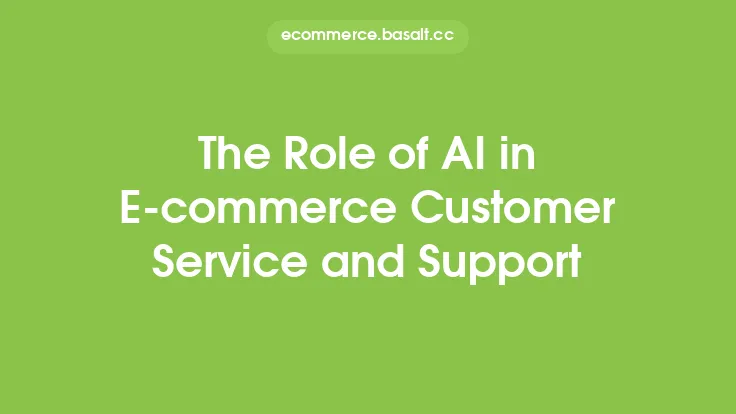In the realm of e-commerce, customer support plays a pivotal role in ensuring customer satisfaction, loyalty, and ultimately, the success of an online business. With the rise of digital shopping, customers expect seamless and efficient support across various channels. E-commerce businesses must adapt to these evolving expectations by implementing a multi-channel support strategy that caters to diverse customer preferences. This approach not only enhances the customer experience but also fosters a positive brand image, leading to increased sales and customer retention.
Introduction to E-commerce Customer Support Channels
E-commerce customer support channels are the mediums through which customers interact with a business to resolve their queries, issues, or concerns. The primary goal of these channels is to provide timely, relevant, and personalized support, ensuring that customers feel valued and supported throughout their shopping journey. Common e-commerce customer support channels include email, phone, live chat, social media, and help desks or ticketing systems. Each channel has its unique characteristics, advantages, and challenges, and businesses must carefully evaluate their target audience's preferences when selecting the channels to support.
Best Practices for E-commerce Customer Support
Implementing best practices in e-commerce customer support is crucial for delivering exceptional customer experiences. One of the key best practices is to ensure responsiveness across all support channels. This means that businesses should strive to respond to customer inquiries promptly, ideally within a few hours, to demonstrate their commitment to customer satisfaction. Another critical best practice is personalization, where support agents address customers by their names, reference their purchase history, and tailor their responses to the customer's specific needs. Furthermore, empowering support agents with the autonomy to make decisions and take actions that benefit the customer can significantly enhance the support experience. This might include offering refunds, replacements, or discounts, depending on the situation.
The Role of Technology in E-commerce Customer Support
Technology plays a vital role in enhancing e-commerce customer support by providing tools and platforms that streamline support processes, improve response times, and offer insights into customer behavior and preferences. For instance, help desk software and ticketing systems help in organizing and prioritizing customer inquiries, ensuring that no issue goes unresolved. Live chat and chatbot technologies enable real-time support, reducing wait times and increasing customer engagement. Additionally, analytics and reporting tools provide valuable data on customer interactions, which can be used to identify trends, areas for improvement, and opportunities to innovate the support experience.
Strategies for Measuring E-commerce Customer Support Effectiveness
Measuring the effectiveness of e-commerce customer support is essential for identifying areas of improvement and making data-driven decisions to enhance the support experience. Key performance indicators (KPIs) such as first response time, resolution rate, customer satisfaction (CSAT) score, and net promoter score (NPS) are commonly used to evaluate support effectiveness. Businesses should also conduct regular customer surveys and feedback sessions to understand customer perceptions and expectations from the support experience. By analyzing these metrics and feedback, e-commerce businesses can refine their support strategies, improve agent performance, and ultimately, boost customer loyalty and retention.
Challenges in E-commerce Customer Support and Solutions
Despite the advancements in technology and support strategies, e-commerce customer support faces several challenges. One of the significant challenges is managing support across multiple channels while maintaining consistency and quality. Implementing an omnichannel support approach, where all channels are integrated and support agents have a unified view of customer interactions, can help overcome this challenge. Another challenge is handling high volumes of support requests during peak seasons or promotional events. Scaling support teams temporarily or leveraging AI-powered chatbots to handle basic inquiries can be effective solutions. Moreover, ensuring support agents are well-trained and equipped to handle complex customer issues is crucial for resolving problems efficiently and enhancing customer satisfaction.
Future of E-commerce Customer Support
The future of e-commerce customer support is poised to be shaped by emerging technologies and evolving customer expectations. Artificial intelligence (AI) and machine learning (ML) will continue to play a significant role in automating support processes, predicting customer needs, and personalizing the support experience. The integration of virtual and augmented reality into support channels may offer immersive and interactive support experiences. Furthermore, the emphasis on customer experience and loyalty will drive businesses to adopt more proactive and preventive support strategies, focusing on preventing issues rather than just resolving them. As e-commerce continues to grow and diversify, the importance of adaptable, innovative, and customer-centric support strategies will only continue to increase.





